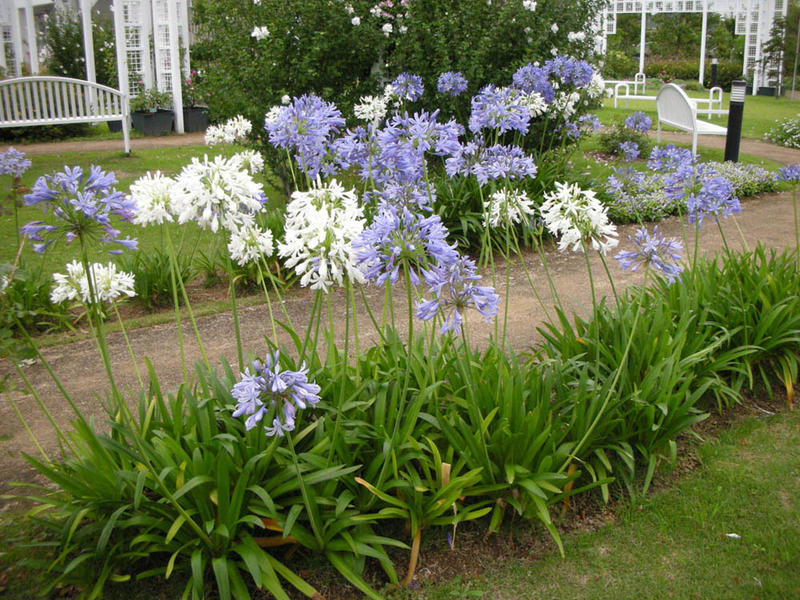Agapanthus Growing Conditions: Dirt, Sunshine, and Watering
Wiki Article
Grasping the Art of Agapanthus Care: Crucial Actions for Healthy Development and Lively Blossoms
In the world of horticulture, the cultivation of agapanthus stands as a rewarding undertaking for those who look for to support these classy blooming plants. With their striking blooms and graceful vegetation, agapanthus has caught the attention of garden enthusiasts worldwide. Nonetheless, attaining ideal development and lively blooms calls for a nuanced method that incorporates different essential actions. From picking the right range to understanding pruning strategies, the trip towards growing flourishing agapanthus plants is complex and holds the crucial to unlocking the complete capacity of these organic gems.
Selecting the Right Agapanthus Variety

When choosing the ideal Agapanthus selection for your yard, think about elements such as climate viability, bloom shade, and growth behavior. Additionally, think about the climate in your area to guarantee the Agapanthus selection you pick can flourish in your specific conditions. Understanding the growth behavior of various Agapanthus varieties is crucial for correct placement within your yard.
Ideal Planting Conditions
Thinking about the optimum environmental demands is vital for effective Agapanthus cultivation. Agapanthus plants are sensitive to chilly temperature levels and ought to be shielded from frost throughout winter months.To ensure healthy growth and dynamic blossoms, plant Agapanthus bulbs at a deepness of concerning 2-4 inches and space them 8-12 inches apart. Adding raw material, such as garden compost, to the soil can improve drain and fertility, advertising robust root growth. Mulching around the base of the plants aids retain wetness and subdues weed growth. Normal watering is essential, specifically throughout the growing period, to keep the soil constantly wet but not saturated.
Watering and Fertilizing Tips
Maintaining proper moisture levels and giving essential nutrients are vital elements in the care routine for Agapanthus plants. When it comes to watering Agapanthus, it is vital to strike an equilibrium. If overwatered, these plants prefer continually moist soil yet are at risk to root rot. During the growing season, water deeply as soon as a week, making certain the dirt is well-draining to avoid waterlogging. In hotter climates or throughout durations of drought, more constant watering might be needed to maintain the soil equally moist. Nonetheless, decrease watering in the winter season to prevent water logged conditions.Feeding Agapanthus is important for advertising healthy development and prolific blossoms. Use a balanced fertilizer, such as a 10-10-10 formula, visit here in the early springtime as new development arises. Repeat this application every 6-8 weeks throughout the growing period. Prevent excessive fertilizing, as it can lead to lavish foliage at the cost of blooms. Always follow the manufacturer's directions for proper dilution and application techniques. By adhering to these watering and feeding ideas, you can ensure your Agapanthus plants prosper and generate vibrant, long-lasting blossoms.
Pruning Methods for Agapanthus
Trimming Agapanthus plants at the ideal times and with correct strategies is crucial for preserving their health and promoting optimal growth and flowering. The suitable time to trim Agapanthus is in late wintertime or early springtime before new development emerges.For flowered stems, wait up until the blossoms have actually perished and after that cut them back to the base. This not just cleans the plant's appearance however likewise motivates the growth of new blossom buds. Deadheading invested blossoms can additionally redirect the plant's energy into generating more blooms instead of setting seeds. However, if you want to accumulate seeds for breeding, leave some blossoms to completely dry and fully grown on the plant.
Keep in mind to use tidy, sharp tools to make accurate cuts and reduce the threat of introducing diseases. Agapanthus. Normal pruning will certainly assist keep your Agapanthus looking cool and healthy and balanced while making sure an abundant display of beautiful blossoms
Dealing With Usual Bugs and Diseases
After ensuring appropriate trimming techniques for Agapanthus, it is important to address usual have a peek at these guys parasites and conditions that can impact the wellness and vitality of these plants. One usual parasite that influences Agapanthus is the Agapanthus gall midge.In addition, Agapanthus plants can endure from root rot if they are grown in inadequately draining pipes dirt. By being cautious and taking timely action against illness and parasites, you can help your Agapanthus plants flourish and create vivid flowers. Agapanthus.

Conclusion
In conclusion, understanding the art of agapanthus treatment entails picking the best selection, offering excellent growing problems, correct watering and feeding, suitable pruning techniques, and dealing with common pests and illness. By complying with these vital steps, you can guarantee healthy development and dynamic blossoms for your agapanthus plants. Keep in mind to on a regular basis keep an eye on and preserve your plants to promote their general well-being and longevity.To make certain healthy and balanced growth and dynamic blooms, plant Agapanthus light bulbs at a deepness of regarding 2-4 inches and room them 8-12 inches apart. By following these watering and feeding ideas, you can ensure your Agapanthus plants prosper and produce vibrant, durable blossoms.
One common parasite that affects Agapanthus is the Agapanthus gall midget. Furthermore, Agapanthus plants can experience from origin rot if they are grown in inadequately draining pipes dirt. By complying with these important steps, you can ensure healthy and check these guys out balanced development and vivid flowers for your agapanthus plants.
Report this wiki page